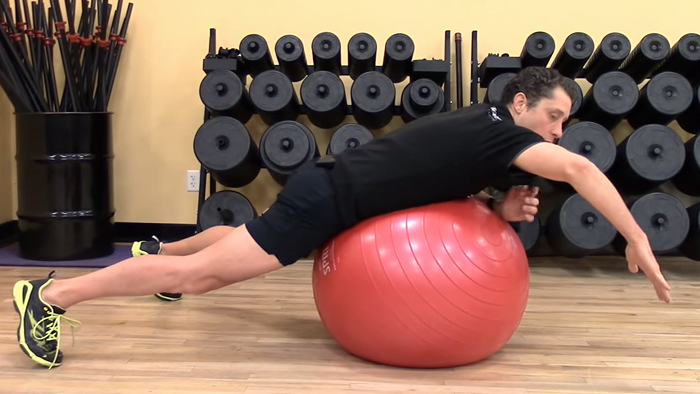The average competitive swimmer travels through the dense aquatic environment somewhere between 60,000 to 80,000 meters per week. At those volumes, the shoulder system endures 30,000 to 40,000 repetitions each week, as do the hip, trunk and legs (legs actually getting more movement). Triathletes and masters swimmers put in between 12,000 and 20,000 meters per week, yielding anywhere between 8,000 to 25,000 shoulder rotations.
All of this mechanical-repetitive movement is performed in a medium which is 773 times more dense than air, and 55 times more viscous. Since 90 percent of the forward propulsive force in swimming comes from the upper extremities, the most commonly reported injuries occur at the shoulder and anatomy of the rotator cuff.
Increased Injuries
The incidence of injury and pain among swimmers has steadily risen since 1974 when only 3 percent of swimmers complained of injury. By 1980 that number had risen to 42 percent. By 1994, that number had risen towards 50 to 69 percent of swimmers complaining of shoulder pain1. The incidence of injury is higher in elite swimmers than “non-elite”swimmers. Non-elite swimmers reported shoulder pain 32 percent of the time, compared to elite swimmers experiencing injury 50-69 percent of the time2.
For the purposes of this short article, I have chosen to talk about swimming freestyle or front crawl, but the exercises will be beneficial for any stroke. I use resistance training to address common sources of breakdown which can occur during one of any of the four swim phases.
- Entry/Catch: Your hand enters in line with the shoulder, having a slight Internal Rotation of the open hand as the elbow extends forward and the opposite leg kicks to stabilize
- Early Pull/Pull: Your elbow and shoulder are high, with the elbow bent to achieve an early vertical forearm at mid-pull. The body begins a rotation, and the body is pulled past a stationary arm.
- Push: Maintaining the vertical forearm through the hip as the trunk rotates approximately 40 degrees axially, the arm accelerates towards the exit at the hip where the elbow exits first.
- Exit/Recovery: Your elbow exits, then the 5th digit, the trunk continues to rotate. During the exit, the hand replaces the elbow as the leading anatomical reference. There should be a strong feeling of “connecting the exit and the early pull of the other arm We are constantly transferring power and force-production from one hemisphere to the other.
Common Mistakes That Lead to Pain
Within each of these phases, there are common distortions and compensations which can contribute to, or cause shoulder pain. Of the many potential freestyle flaws, the five most common have been identified below3.
- Thumb first entry: caused by over developed internal rotation, or weakened external rotation
- Crossover at entry: caused by too much mobility at the shoulder, or poor scapular control.
- Low elbow catch and pull: caused by weak shoulder girdle and poor core stability.
- Swimming flat: can be caused by poor motor programming and weak core musculature
- Over rotating (during breath cycle): can be caused by poor timing, and diminished activation of the shoulder musculature. Many distortions occur during the breath cycle.
Our key objective as athletes is to safely close the gap between our current performance and our potential. Intelligently applied strength training schemes greatly diminish the risk of injury, and enhances performance. We’ve all heard plenty of swim anecdotes and philosophies. Here, we have focussed on the science.
Exercises
Below is a playlist of exercises which will develop the strength of the shoulder, hips, and core musculature, thereby increasing the force production capabilities of these systems as well as reducing the risk of injury.
- External shoulder rotation with shoulder press: 3 sets of 12 to 20 reps. Take it to a muscular burn plus 2 reps.
- Walking cable chop: 3 sets of 8 to 12 reps (steps). If the cable length won’t allow a walk, just step and rotate, stepping back and repeating throughout.
- Scapular flexion on ball: 3 sets of 14 to 20 reps. look down. relax the neck/shoulders. Use as much range and symmetry as possible.
Rest two minutes
- Russian twist: 3 sets of 12. Feet shoulder width, and decrease stance to progress.
- Medicine ball toss: 3 sets of 8 to 12. Be careful with this one. Keep the neck relaxed, catch and release the ball at the highest point- NEVER GO BEYOND NEUTRAL with the back (too much curvature in the low back is not good)
- Flutter kick/Chest pass: 3 sets of 20 to 25 reps. Keep the tempo nice and even
- Scapular flexion and extension: 3×10 to 12 per. One pulley or band up high, and one down low. Fully lock the elbows. Relax the neck. We must use a lighter weight when performing scapular flexion (moving arm upward)
Rest two minutes
- Walking medicine ball criss-cross: 3 sets of 8 to 10 steps per. Be patient, this is a complex pattern, and requires timing and rhythm.
- Reverse fly: 3x 12 to 16 reps. Go until you achieve a muscular burn plus 2 more reps. DO NOT SHRUG the shoulders in any way.
- Stability ball flutter kick: 3-4 sets of 25 to 50 reps. This pattern is high tempo/ballistic. If you become tight on time, skip this one (if you need to).
Key Points to Keep in Mind
- The exercises are grouped into “circuits” We want to keep the rest interval between exercises to between :10 to :40. Here, take as little rest as you can take, without taxing yourself too much.
- Let the repetitions guide your selection of load (weight). Choose a weight or load that will allow you to perform the desired number of repetitions and sets without causing injury.
- Always lean towards the conservative side of weight selection, and the range of motion used.
- The first time through this workout, it may be a good idea to perform only 2 sets of each exercise.
- Always use your best judgement and trust your rational intuition.
- You can go through this session two times per week.
Adding in these simple movements twice a week will go a long way to keeping you in the water and improving your fitness. Don’t wait until you are injured to get started, stay healthy and keep putting in the yards.
References
- Sein, M.L. et al. (2008, May 7). Shoulder pain in elite swimmers: primarily due to swim-volume-induced supraspinatus tendinopathy. Retrieved from https://bjsm.bmj.com/content/bjsports/44/2/105.full.pdf
- Richardson, A.B. et al. (1980, May). The shoulder in competitive swimming. Retrieved from http://www.ncbi.nlm.nih.gov/pubmed/7377446
- Barbosa, T.G. et al. Biomechanics of Competitive Swimming Strokes. Retrieved from http://www.intechopen.com/books/biomechanics-in-applications/biomechanics-of-competitive-swimming-strokes



